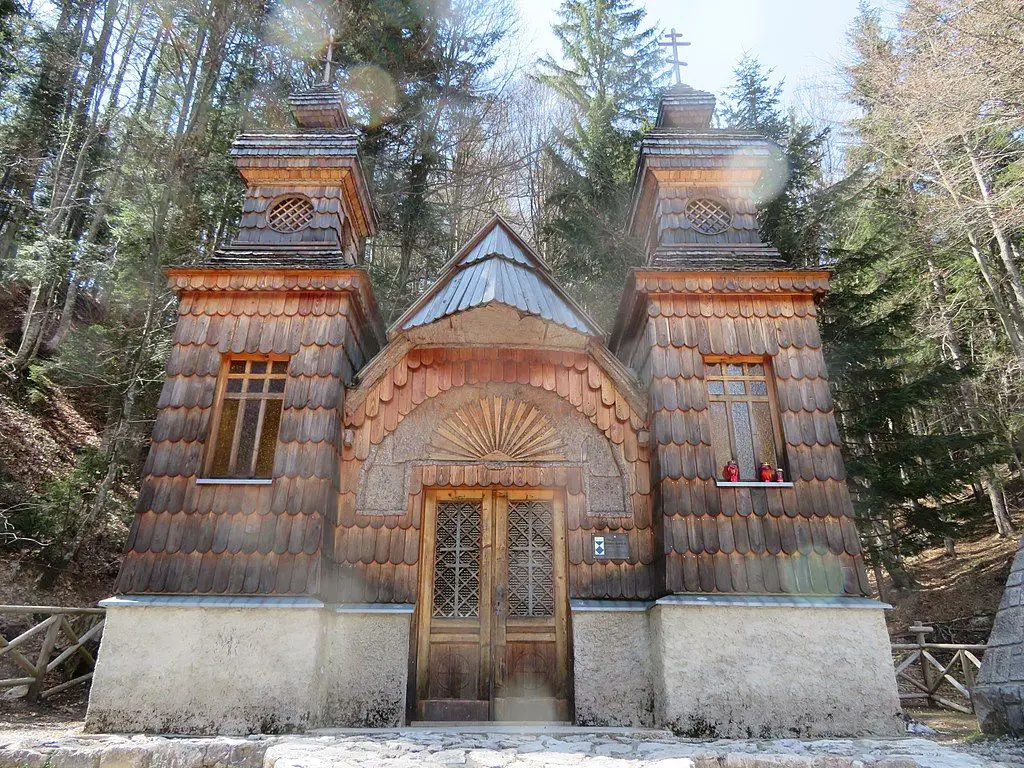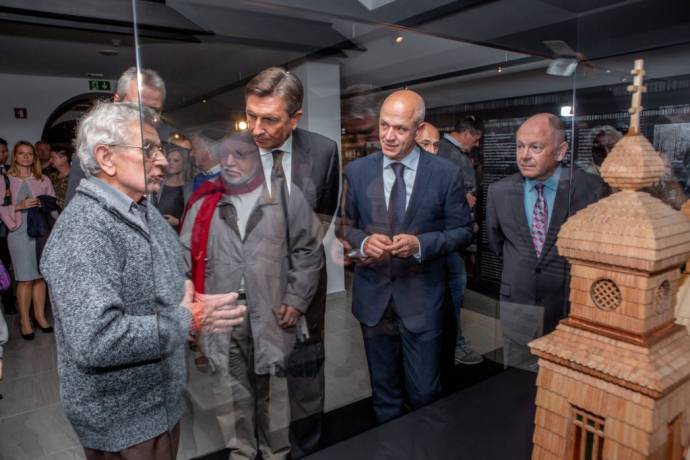Slovenian History: “Life for Tsar” Exhibition Reveals Work of Russian POWs During WW1
STA, 8 November 2018 - The Park of Military History in Pivka has marked the centenary of the end of World War One with an exhibition on Russian prisoners of war, whom Austro-Hungarian authorities brought to Slovenian lands to work on a number of infrastructure projects.
Speakers at Thursday's ceremony preceding the exhibition were unanimous in saying that it sheds light on a chapter of national history that is yet to be fully researched.
Janko Boštjančič, the museum's director, said "Life for Tsar" tried to fill a void in events marking the centenary of World War One in Slovenia by highlighting the fate of tens of thousands of Russian POWs on Slovenian territory.
Related: Ceremony Honours Russian POWs Who Died Building Vršič Pass
This comprehensive exhibition, the first of its kind, offers a number of photos, videos and documents from that period, giving visitors insight into the lives of the POWs.
Boštjančič stressed the PWOs had been brought here to work on a number of infrastructure projects behind the Isonzo Front line and further inland, especially railways and roads.
And due to a general lack of workforce - many Slovenian men were fighting on fronts abroad - the POWs also helped farmers and worked in forests, coal mines or factories.
With the Russian Chapel being the main symbol of the Russian POWs' hardships in Slovenia, the exhibition features a scale model of the chapel as the main artefact.
Predsednik republike je danes slovesno otvoril razstavo "Življenje za c(es)arja" v Parku vojaške zgodovine Pivka. pic.twitter.com/TXgpY2Pn9O
— Borut Pahor (@BorutPahor) November 8, 2018
Boštjančič symbolically thanked all the Russian POWs for all they had contributed to Slovenia, noting that without being aware of it, we still use some of the infrastructure they had built, mentioning for instance "a Russian road" in the Pivka region.
Delivering the keynote, Evgen Bavčar, a France-based Slovenian photographer and philosopher, pointed to "the ethical need to remember" the overlooked chapters of our past, including the Russian POWs as well as many Slovenian soldiers who had often fought for other nations.
"When we focus on POWs, we defend the civilisational norm of remembering," he said, adding "those we were killed should be given the honour of memory and history" and should have their dignity restored.
Bavčar urged President Borut Pahor as the supreme commander of the Slovenian Armed Forces, who later opened the exhibition, to erect memorials to those fellow countrymen who had fought in foreign armies.
All our World War 1 stories can be found here
The museum has put up the exhibition in collaboration with Slovenia's Institute for the Protection of Cultural Heritage and the Kidričevo History Association.
The show is based on a comprehensive study the institute's Centre for Preventive Archaeology has carried out over the past few years, identifying almost 400 locations associated with Russian POWs in Slovenia.
The last in a series of the museum's events marking the centenary of WWI, the exhibition will be accompanied by an extensive digital catalogue, which is also expected to be published in print by the end of the year.
The museum’s website, in English, is here.

The Russian Chapel. Photo: Wikimedia - Dage - Looking For Europe CC by 2.0






